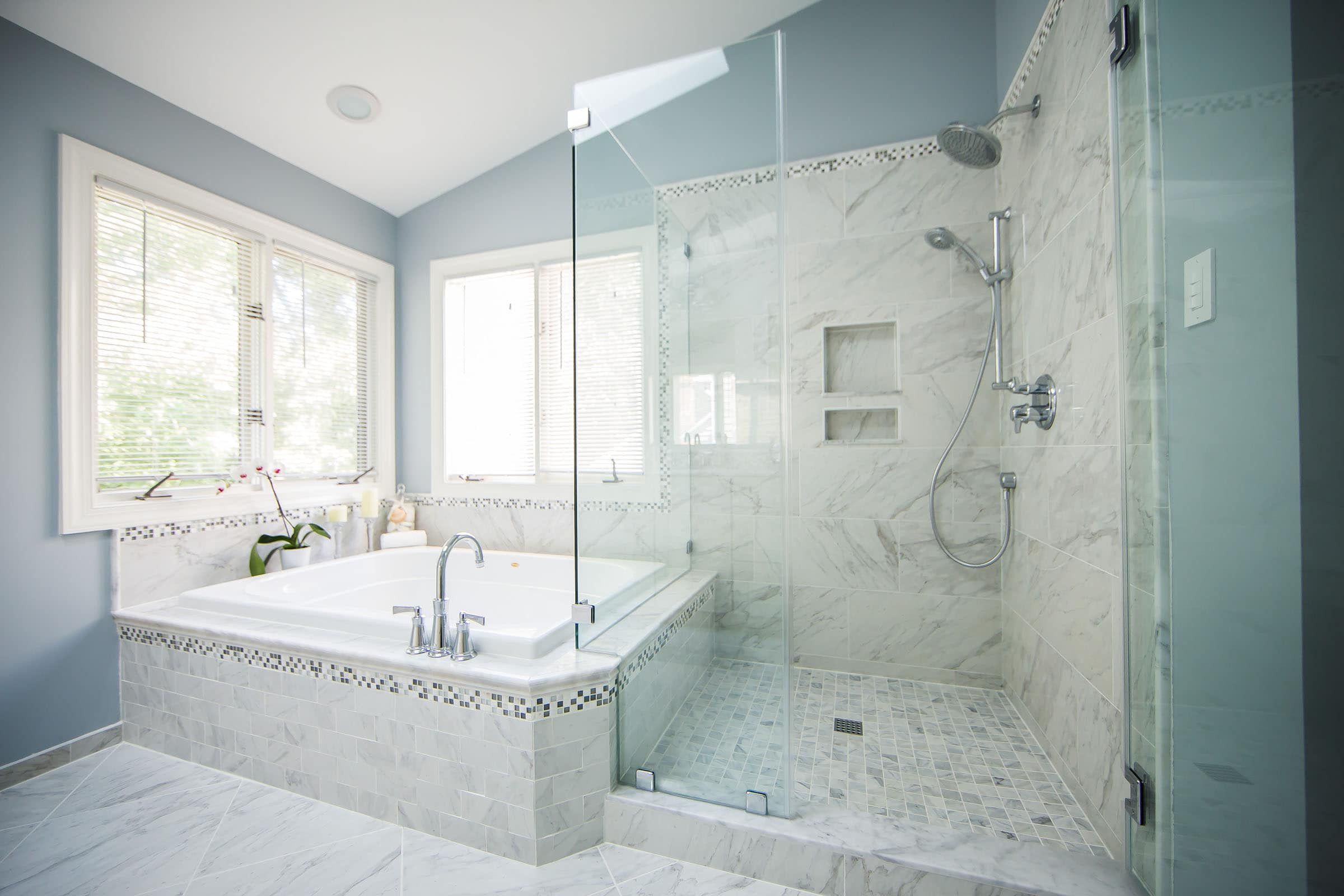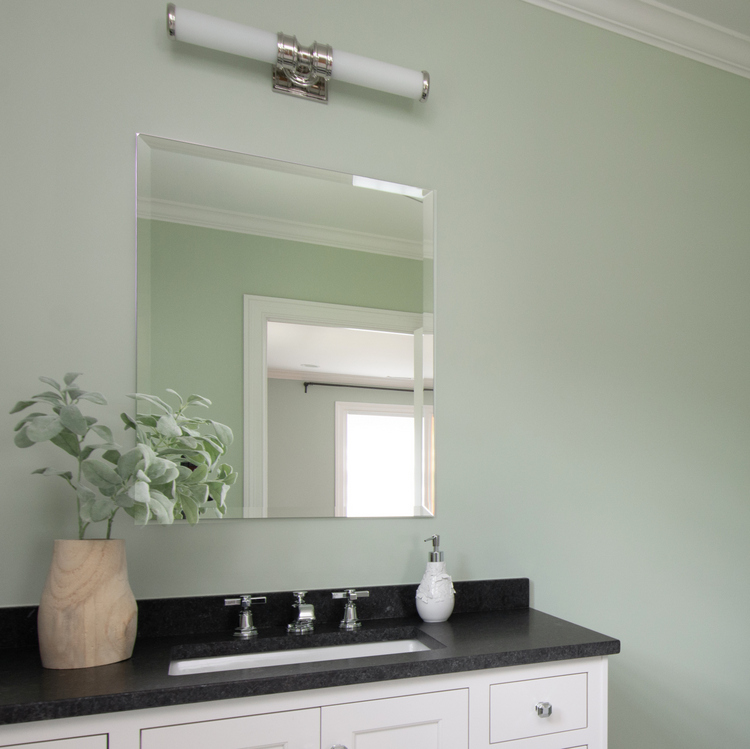Understanding Eggshell Finish

Eggshell paint is a popular choice for interior walls, offering a balance between durability and a soft, elegant appearance. It’s named after the smooth, slightly glossy finish that resembles the shell of an egg. This finish provides a subtle sheen without being overly reflective, creating a warm and inviting ambiance.
Characteristics of Eggshell Paint Finish
Eggshell paint is characterized by its low sheen and velvety texture. It reflects light softly, creating a warm and inviting ambiance. Its subtle sheen makes it suitable for both formal and informal settings, while its low-sheen finish helps to hide minor imperfections on the walls.
Pros and Cons of Eggshell Paint in a Bathroom, Can you paint a bathroom with eggshell
Eggshell paint offers several advantages in a bathroom setting, but it also has some drawbacks to consider.
Advantages of Eggshell Paint in Bathrooms
- Easy to Clean: Eggshell paint is washable, making it a practical choice for bathrooms where spills and splashes are common. It can be easily wiped clean with a damp cloth, removing dirt and grime without damaging the finish.
- Durable: Eggshell paint is more durable than flat paint, making it better able to withstand the moisture and humidity present in a bathroom environment. It can withstand frequent cleaning without chipping or peeling.
- Elegant Appearance: The subtle sheen of eggshell paint creates a sophisticated and polished look in a bathroom, enhancing its overall aesthetic appeal. It adds a touch of elegance without being overly reflective.
Disadvantages of Eggshell Paint in Bathrooms
- Less Stain-Resistant: While eggshell paint is washable, it is less stain-resistant than semi-gloss or gloss paint. Spills and stains may be more difficult to remove completely, requiring more effort to clean.
- Not Ideal for High-Traffic Areas: In high-traffic areas like showers or around sinks, eggshell paint may not be as durable as semi-gloss or gloss paint. These areas experience more frequent contact and wear and tear, which can lead to paint damage.
- May Show Imperfections: While eggshell paint hides minor imperfections, it may accentuate larger imperfections or uneven surfaces. If the walls are not properly prepared, these flaws may become more noticeable with eggshell paint.
Comparison of Eggshell Finish with Other Bathroom Paint Finishes
Eggshell paint sits between flat and semi-gloss paint finishes, offering a balance between aesthetics and durability. Here’s a comparison of eggshell finish with other commonly used bathroom paint finishes:
| Paint Finish | Sheen Level | Pros | Cons |
|---|---|---|---|
| Flat | 0% Sheen | Excellent at hiding imperfections, creates a matte finish | Not washable, not durable, easily stained |
| Eggshell | 5-10% Sheen | Washable, durable, elegant appearance | Less stain-resistant than semi-gloss or gloss, may accentuate imperfections |
| Semi-Gloss | 25-40% Sheen | Highly washable, durable, stain-resistant, hides imperfections | More reflective, may show brush strokes |
| Gloss | 60-90% Sheen | Very durable, highly washable, extremely stain-resistant | Very reflective, may show brush strokes, not ideal for hiding imperfections |
Preparing Your Bathroom for Painting

A well-prepared bathroom is crucial for a successful paint job. This involves cleaning, prepping surfaces, and addressing any imperfections. By taking the time to properly prepare your bathroom, you’ll ensure a smooth, even, and long-lasting paint finish.
Cleaning and Prepping Bathroom Surfaces
Thorough cleaning is essential before painting. It removes dirt, grime, soap scum, and mildew, creating a clean surface for the paint to adhere to.
- Remove all items from the bathroom. This includes towels, toiletries, rugs, shower curtains, and anything else that could obstruct your work or get in the way of the paint.
- Remove any existing caulk. Use a utility knife to carefully remove old caulk around tubs, sinks, and shower stalls.
- Clean the walls and ceiling. Use a solution of warm water and mild dish soap to wash the walls and ceiling. For stubborn stains, use a bathroom cleaner specifically designed to remove mildew and mold.
- Rinse the walls and ceiling. Rinse thoroughly with clean water to remove all traces of soap and cleaner. Allow the surfaces to dry completely before proceeding.
- Clean the grout. Use a grout brush and a grout cleaner to remove dirt and grime from the grout lines.
- Clean the fixtures. Use a cleaner specifically designed for bathroom fixtures to clean the faucets, showerheads, and other fixtures. Cover the fixtures with painter’s tape to protect them from paint splatter.
Patching and Sanding Imperfections
Before painting, it’s important to address any imperfections on the bathroom walls and ceiling. This includes patching holes, cracks, and other blemishes.
- Fill holes and cracks. Use a patching compound or spackle to fill in any holes, cracks, or dents. Apply the compound with a putty knife, smoothing it out to create a seamless surface.
- Sand the patched areas. Once the patching compound has dried, sand it smooth with fine-grit sandpaper. This creates a smooth surface for the paint to adhere to.
- Prime the patched areas. Apply a primer to the patched areas to help the paint adhere properly. This will ensure a smooth, even finish.
Painting Your Bathroom with Eggshell: Can You Paint A Bathroom With Eggshell

Now that your bathroom is prepped and ready, it’s time to get painting! Applying eggshell paint to your bathroom walls and ceiling is a relatively straightforward process, but there are some key techniques to keep in mind for a smooth and professional-looking finish.
Applying Eggshell Paint
Applying eggshell paint is similar to applying other types of paint, but there are some specific considerations for achieving the best results in a bathroom. Here’s a step-by-step guide:
- Choose the right tools: For most bathroom painting projects, you’ll need a paint roller with a medium-nap roller cover for walls and ceilings, a paint brush for cutting in around trim and fixtures, and a paint tray with a liner.
- Start with the trim: Begin by using a brush to carefully paint the trim around your bathroom. This ensures a clean line and prevents paint from getting on the walls.
- Cut in around fixtures: Use a brush to carefully paint around any fixtures, such as light switches, outlets, and towel bars.
- Roll the walls and ceiling: Once the trim and fixtures are painted, use the roller to apply the paint to the walls and ceiling. Work in sections, starting at the top and rolling in a “W” pattern. This helps ensure even coverage.
- Allow the paint to dry: Let the first coat of paint dry completely before applying a second coat. This typically takes about two hours.
- Apply a second coat: Once the first coat is dry, apply a second coat of paint using the same techniques as the first coat. This will help create a more durable and opaque finish.
Achieving a Smooth and Even Finish
The key to a smooth and even finish with eggshell paint is to apply it evenly and to avoid drips and runs. Here are some tips to help you achieve this:
- Use a high-quality roller cover: A good roller cover will help distribute the paint evenly and prevent streaks.
- Load the roller with the right amount of paint: Don’t overload the roller with too much paint, as this can lead to drips.
- Roll in a consistent direction: Roll the paint in a consistent direction to avoid lap marks.
- Work in small sections: It’s easier to apply paint evenly in small sections, especially when working around corners and fixtures.
- Smooth out any drips or runs: If you do get a drip or run, use a brush or a damp cloth to smooth it out before it dries.
Painting Around Fixtures and Trim
Painting around fixtures and trim can be tricky, but with the right techniques, you can achieve a professional-looking finish. Here are some tips:
- Use painter’s tape: Painter’s tape can help protect the trim and fixtures from paint. Apply the tape carefully and press it down firmly to ensure a good seal.
- Use a brush for cutting in: A brush is the best tool for cutting in around trim and fixtures. It allows you to control the paint flow and achieve a clean line.
- Use a small brush for tight spaces: For tight spaces, such as around light switches and outlets, use a small brush or a detail brush.
- Don’t overload the brush: Don’t overload the brush with too much paint, as this can lead to drips.
- Remove the tape before the paint dries: Remove the painter’s tape before the paint dries completely to avoid pulling up the paint.
Can you paint a bathroom with eggshell – Eggshell paint is a popular choice for bathrooms due to its durability and subtle sheen. However, before you start painting, it’s crucial to address any existing issues like peeling paint in bathroom showers. Moisture and humidity are the primary culprits behind peeling paint, so ensure the shower area is properly sealed and ventilated.
Once you’ve tackled these problems, you can confidently paint your bathroom with eggshell, enjoying its beautiful finish and long-lasting performance.
Eggshell paint is a popular choice for bathrooms because it offers a soft, matte finish that can help to create a relaxing atmosphere. However, when dealing with a small bathroom, it’s important to consider how you’ll maximize space. One of the most efficient ways to do this is by finding creative storage solutions, such as hanging towels on the back of the door or installing a towel bar on the wall.
If you’re unsure where to start, you can check out this article on where to hang towels in a small bathroom. Once you’ve addressed your storage needs, you can confidently paint your bathroom with eggshell paint, knowing that you’ve created a functional and stylish space.
